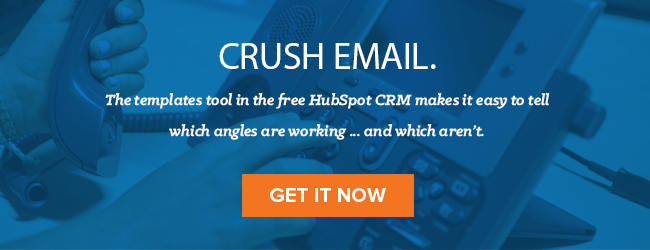Have you met a “Suspicious Samira”? That’s the type of buyer who really makes you work to earn his trust. Samira is a critical thinker, meaning she’ll question everything you say. If you don’t shoot from the hip at all times, you’ll probably lose her confidence -- and the deal with it.

Working with this type of buyer poses some unique challenges. But there’s an upside: If you can convert a skeptic into a true believer, you know they’re really on your side.
Read on for eight ways to win over a doubtful buyer.
1) Avoid Jargon and Buzzwords
Stay far away from jargon and filler words. Skeptical buyers are always on high alert for things that sound good yet but don’t mean anything -- so using fancy lingo will convince them that you are, in fact, full of it.
What you say: “Our cost-effective solution is specifically engineered to meet your needs.”
What they hear: “Blah blah blah.”
To see whether your statement passes the “no B.S.” test, reword it without any buzzwords, acronyms, or industry terms. If you can’t put it in everyday language, it’s probably all jargon, no meaning.
2) Reference Case Studies and Testimonials
A dubious prospect might not trust you, but they will trust other customers -- who they usually view as less biased. Bring in case studies and testimonials when relevant, including when you’re first reaching out, when you’re discussing potential use cases, when you’re demonstrating credibility, and so on.
If you’re fortunate enough to have multiple case studies and testimonials, reference only the most relevant ones. A skeptical buyer won’t be overly swayed by a success story from a company totally different from his own.
3) Bring In Plenty of Evidence
You know what they say -- numbers don’t lie. Skeptical prospects typically see your point when it's backed by by cold, hard data.
So next time you find yourself making a generic value statement, reinforce it with some statistics. Don’t have any stats? You probably shouldn’t be making that claim.
Here’s an example of how you’d reframe a value statement:
Bad: “Our tool streamlines internal communication.”
Better: “Our tool reduces the average number of daily emails sent per employee by 25%.”
Best: “Eighty-nine percent of our customers see each employee sending around 25% fewer emails per day. For instance, Greenwood Supply’s average employee used to send 60 messages every day. Now, they send 45.”
4) Be Specific
On a similar note, steer clear of vague or hypothetical statements. Use the “who, what, when, where, and how” rule to guide what you say -- if your statement doesn’t answer those five questions, it’s not specific enough.
Take this sample line: “Our platform is really easy to install.”
It fails to answer every question but the “what.” Here’s a much more specific version:
The platform will only take you -- or anyone else on your team with admin computer privileges -- roughly 20 minutes to install on your servers. Since the download won’t affect normal operations, you can do it anytime. We’ve also got a dedicated implementation specialist to walk you through the process.”
As you can see, adding a couple details makes the claim far more persuasive.
5) Directly Answer Their Questions
You might be able to get away with evading questions from regular prospects (although we'd never advise it). However, when you pull the same trick with skeptical prospects, they’ll definitely notice -- and it'll make them suspicious.
To avoid seeming shady, always give buyers a straight answer. For instance, if they ask which integrations your platform supports, don't dodge their question by bringing up your API and how simple to configure it is.
Tangents and misdirections will make them think that you're hiding something or are only interested in pushing your own agenda.
This policy applies even when you’re facing a tough question. Sure, admitting that your company has had some quality issues lately won’t be easy, but you’ll gain the buyer’s respect.
6) Always Provide Context
Doubtful prospects don’t take anything at face value. Win their trust by giving them plenty of context -- and letting them make up their minds for themselves.
Imagine you’re discussing the features of your visitor management system. If you were speaking to a normal prospect, they might accept, “You’ll save a ton of time by pre-registering your office visitors.”
But to a skeptical prospect, you’d have to explain: “We added the pre-registration option after noticing how many users would book their visitors hours in advance, just to save the hassle of doing it when the person actually came in.”
This technique also comes in handy during agenda-setting. When you call a prospect, start with, “Hey Jane, here’s why I called … ” They’ll appreciate the no-nonsense approach.
7) Use Your Commonalities
Who are you more likely to trust: The stranger wearing a shirt for your favorite band, or the stranger wearing a plain top? Yup, probably the fellow fan.
“In-group bias is a phenomenon where people favor members of groups they belong to,” explains HubSpot sales blog editor Leslie Ye. “Rapport isn’t enough to close deals on its own, but if you can find a point of commonality, use it to your advantage.”
The key to this technique: Keep it natural. If you’re only “meh” about Mediterranean food, don’t tell the prospect you eat falafel every night just to force a connection. It’ll only take a couple questions for the truth to come out -- and then the buyer will trust you even less than before.
8) Tell It Like It Is
Some prospects respond extremely well to bluntness. If they express their skepticism with phrases like, “Don’t beat around the bush with me … ” or “You say that now, but I’m not sure I believe you … ”, match their style.
Here's an example to give you an idea:
Before: Your website looks good, but I have some suggestions that’ll make it even stronger.
After: You’re likely losing leads because your website looks out-of-date. I have some suggestions for making it more current.
And here's another:
Before: Since you’re just getting started with remarketing, I’d suggest the Basic plan.
After: In my opinion, you won’t get your money’s worth out of Pro. Most of our customers who haven’t done remarketing before only use the Pro features that you can also get with Basic.
Caveat: Being direct doesn’t mean being rude. If you’d be embarrassed to say something in front of your grandparents, keep your lips zipped.
Next time you meet a prospect who’s highly skeptical, don’t write them off. You may have to work a little harder to show them you’re trustworthy -- but once you do, you’ll have won their loyalty for a long time.










